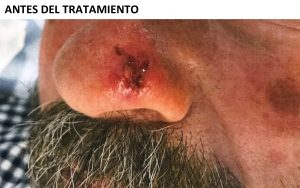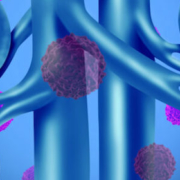Elevated apoptosis in a radioresistant pancreatic adenocarcinoma cell line
Elevated apoptosis and tumor stem cell destruction in a radioresistant pancreatic adenocarcinoma cell line
A recent study presented by Gertrud Farika, from the 1st Department of Pathology and Experimental Cancer Research, Semmelweis University, Budapest, Hungary. It deals with elevated apoptosis and tumor stem cell destruction in a radioresistant pancreatic adenocarcinoma cell line when radiotherapy is combined with modulated electro-hyperthermia (mEHT- Oncothermia)
Malignant exocrine tumors of the pancreas are among the worst to respond to oncotherapy. Despite sophisticated guidelines and new targeted therapies, the 5-year survival rate of patients with pancreatic adenocarcinomas is under 10%. The most critical factor responsible for this is the high resistance of the tumor cells to the available chemo- or radiotherapies.
Oncothermia (Modulated electro-hyperthermia – mEHT) is a complementary non-invasive cancer treatment using impedance-coupled radiofrequency to generate selective heat of <42°C causing cell stress and destruction in malignant tissue. In this study, we tested the combination of radiotherapy with Oncothermia in a radioresistant pancreatic adenocarcinoma cell line Panc1.
Methods
The study was organizated in 4 groups:
- control (C)
- Oncothermia treated for 60 min (mEHT)
- irradiated with 2 Gy using 137Cs (R)
- combination treatment: irradiation followed by the same dose of Oncothermia (Oncothermia +R)
Results
Visible morphological changes were observed after 24 hours in the treated groups. An elevated number of apoptotic bodies and cell number loss were appeared. Compared to the control group, the apoptotic ratio was the highest in the Oncothermia +R group and significant elevation was measured also in the Oncothermia group. ALDH+ tumor stem cells decreased significantly after Oncothermia and Oncothermia +R treated groups compared to the control.
As it was expected the irradiated group showed the same amount
of CSC cells as the control group (due to well-known radioresistance of the cell line). The CSCs colony forming capacity was also significantly lower in the Oncothermia and Oncothermia +R group compared to the control group. Furthermore, H2Axγ and calreticulin positive cell fractions, indicating DNA double strand-brakes and ER-stress, respectively, were also significantly increased in the Oncothermia and the Oncothermia +R treated groups.
Apoptosis with Oncothermia
Oncothermia treatment alone can lead to massive apoptosis in Panc1 cells by inducing cell stress and DNA double-strand break. Irradiation alone caused some necrosis but without major effect on CSCs. The combined treatment significantly improved the efficacy of radiotherapy resulting in major apoptosis and reduction of CSCs despite of the inherent radioresistance of Pan1.
This study was funded by a grant of the National Research and Innovation Office.
For more information, you can access the original study in the following link.





